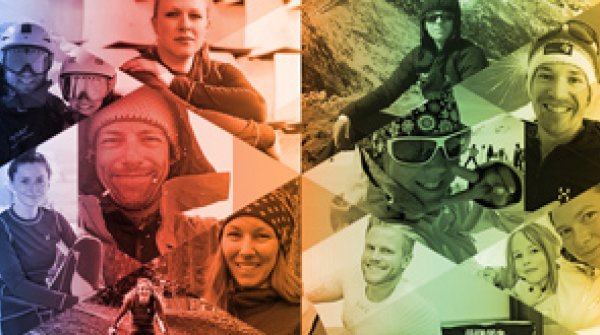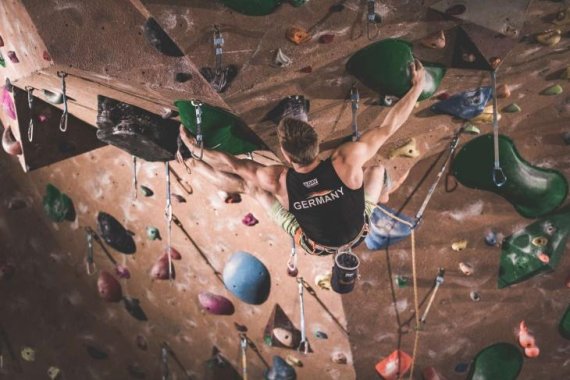
Chris Hanke trains 12 times per week – one to three units per day. The 24-year-old is a member of the German perspective squad for the 2020 Olympic Games in Tokyo. His training unit are comprised of strength endurance training, maximum strength training, and interval training. Added to that are leg training at the gym and speed training on the wall twice a week.
ISPO.com joined Chris Hanke in compiling seven training tips guaranteed to help every climber progress and get a fit start on the new season. But he also says there’s one thing you can never forget when training: “Have fun!”
Professional climbers never hit the wall before warming up. This prevents injuries and unfolds the full potential of the locomotor system. Only when the cardiovascular system and muscles are properly activated can performance be achieved. The same is also true at the mental level: An alert mind can act and react better. If you don’t warm up thoroughly, it can lead to your arms getting heavy even in the first route. This unpleasant phenomenon is called “pump,” which makes it difficult to continue climbing.
A warm-up program can be structured as follows:
- Get the circulation going: jumping jacks, go for short jog, jump rope
- Mobilize your joints (shoulders, hips, elbows, knees, wrists) and stimulate the production of joint fluid: Gently test the radius of movement of your joints by rotating and stretching slightly
- Stretch (maximum 10 to 15 seconds per unit)
- Gentle climbing at lower levels of difficulty
Just as important is climbing out at the end of the session. It is enough to climb one or two easy routes to get your muscles relaxed again. Stretching and using a blackroll will also help with rapid regeneration.
Climbing is a sport that demands the entire body. So it’s only logical to strengthen the body through holistic training. Self-weight exercises that can also be performed at home without any problems are very popular. There are different training methods that focus on wholeness: functional fitness, calisthenics and freeletics for instance. Common physical strength exercises include push-ups, abdominal training, dips, planks, and pull-ups. The use of aids like the Theraband also supports holistic training. Balancing antagonists, i.e. opposing muscles, has a high preventive benefit. This helps avoid finger problems, climber’s elbow, shoulder pain, and shoulder problems.
40 Years After Messner's Wild Solo Ride: The World's Best Climbers
The handstand is a fundamental skill. To be able to do the handstand at all takes a strong body. The training creates a strong foundation, which is also very useful for climbing. This includes strengthening the trunk muscles (for body tension), arms, and shoulders, promoting mobility in the arm joints, shoulders, and hips, as well as good balance. If you can master the handstand, you have good motor skills and the best conditions for climbing.
Finger force is absolutely essential for climbing on small ledges and steep, slippery slopes. With the start of the climbing season on the rock, training on the campus board is also the best preparation. A campus board is a training device that can be attached to a door frame, for example. These fingerboards have various features like finger holes in different sizes, sloping support surfaces for the hand and grips, all designed to maximize finger force. However, it’s best for beginners to learn coordination and climbing techniques directly on the wall. You should only approach training on the campus board after about two years of regular training.
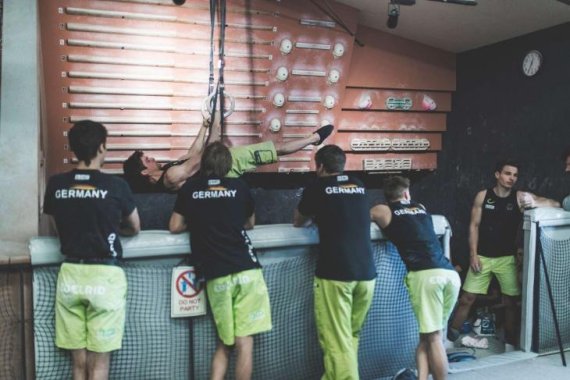
Interval training in climbing is highly intensive strength endurance training carried out either on a climbing or bouldering wall. It is important to have a predetermined sequence of stress and pauses, the duration, difficulty, and intensity of which depends on the climber’s individual capabilities.
It’s best to start with extensive intervals – relatively easy routes, but longer climbing times (about 40 moves). The breaks can be shortened by one to two minutes. The more intensive the training, the shorter the work times and the longer the breaks. Choose the level of difficulty in such a way that, eight out of ten, you can master the sets without problems. In the last two sets, it’s time to grit your teeth. For maximum difficulty it’s also possible to install a locking handle, which is particularly demanding.
In contrast to training with weights and machines, which is rather static, exercises with rings (two rings attached to two slings via fixed points) and slings (also called a TRX band) strengthen the stabilizing muscles. The exercises promote all your trunk muscles and provide the necessary stability when climbing. In order to train with rings and slings, however, that strength should already be present. Otherwise, the training will quickly become injury-intensive. Pull-ups and pushups are a good foundation.
Chris Hanke’s favorite exercise on the rings is the one he himself dubbed the “Superman”: It’s excellent for training the muscle chain of the latissimus dorsi, as well as the trapezius and shoulder muscles. Start in the push-up position. Hang the rings at chest level. Move one arm forward in the stretched position while keeping your other arm at shoulder rest. Now you have to keep your balance and balance the wobblers.
Those who train a lot also have to take regular breaks. Climbing-free days should be included in every training plan. But that doesn’t mean you can’t exercise at all on those days. Quite the opposite: Running and yoga relax the body, and are the perfect counter-balance. It’s called active regeneration, as the body can recover while doing other sports.
Meanwhile, there’s also special yoga training for climbers, where the focus is on parts of the body that are heavily stressed, especially when climbing. Yoga also offers good prevention against injury, as you can purposefully target antagonist areas. This provides the necessary balance in the locomotor system. Beyond that, yoga trains both balance and body tension. Yoga and meditation also promote mental strength, as focus is a major help during exercises.
- ISPO awards
- Mountain sports
- Bike
- Design
- Retail
- Fitness
- Health
- ISPO Job Market
- ISPO Munich
- ISPO Shanghai
- Running
- Brands
- Sustainability
- Olympia
- OutDoor
- Promotion
- Sports Business
- ISPO Textrends
- Triathlon
- Water sports
- Winter sports
- eSports
- SportsTech
- OutDoor by ISPO
- Heroes
- Transformation
- Sport Fashion
- Urban Culture
- Challenges of a CEO
- Trade fairs
- Sports
- Find the Balance
- Product reviews
- Newsletter Exclusive Area
- Magazine
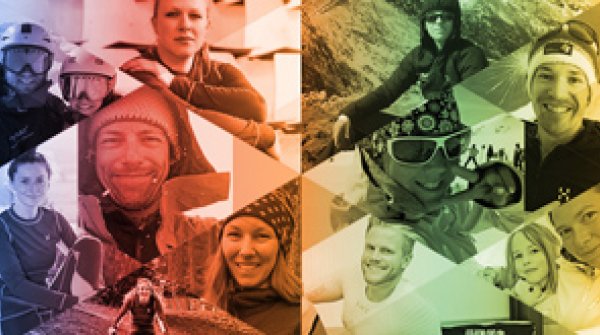
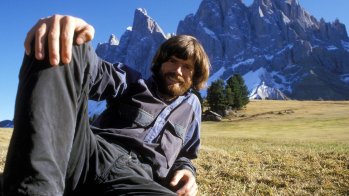
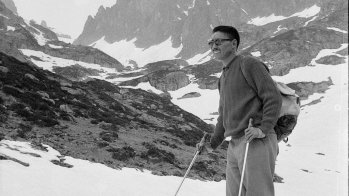
![mb-170504-kaltenbrunner By ascending the K2 in 2011, Gerlinde Kaltenbrunner was the first woman ever to ascend all eight-thousanders and the first who managed this without additional oxygen. However, the 1970 born Austrian is not keen on records. " If it was all about records, I would have taken the easiest route everywhere [...] Being the first is not important to me".](/sites/default/files/styles/gallery_image_article_phone_1x/public/b/79/70/79706302-imageData.jpg?h=8fe3b20d&itok=abz5O8dZ)
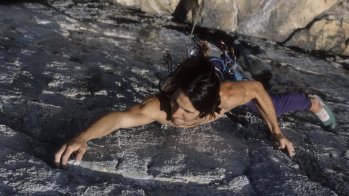


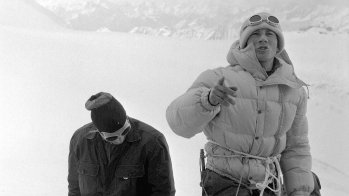
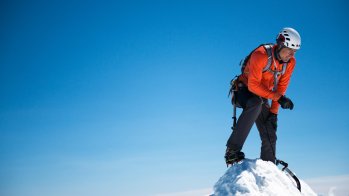
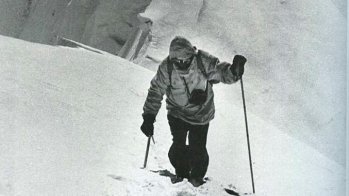



![mb-170504-kaltenbrunner By ascending the K2 in 2011, Gerlinde Kaltenbrunner was the first woman ever to ascend all eight-thousanders and the first who managed this without additional oxygen. However, the 1970 born Austrian is not keen on records. " If it was all about records, I would have taken the easiest route everywhere [...] Being the first is not important to me".](/sites/default/files/styles/gallery_thumbnail_article_phone_1x/public/b/79/70/79706302-imageData.jpg?h=8fe3b20d&itok=9-Ka4q08)







